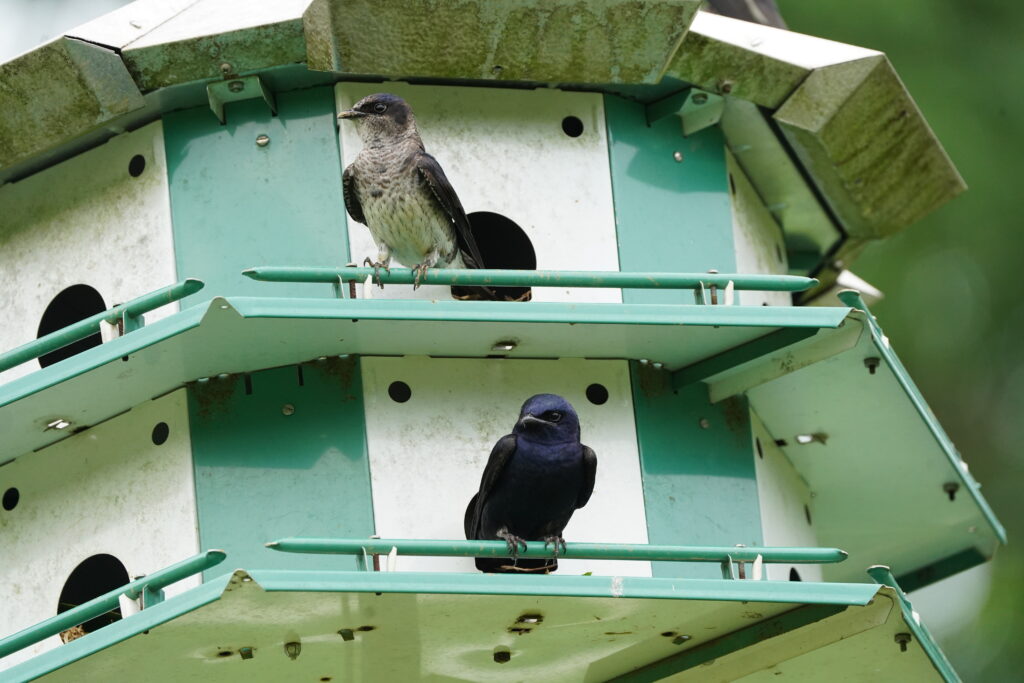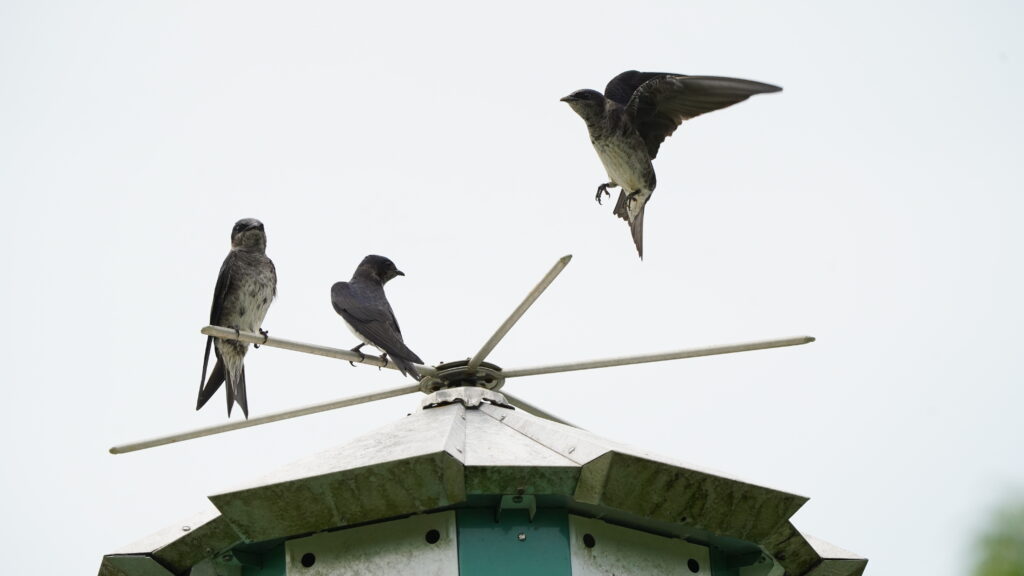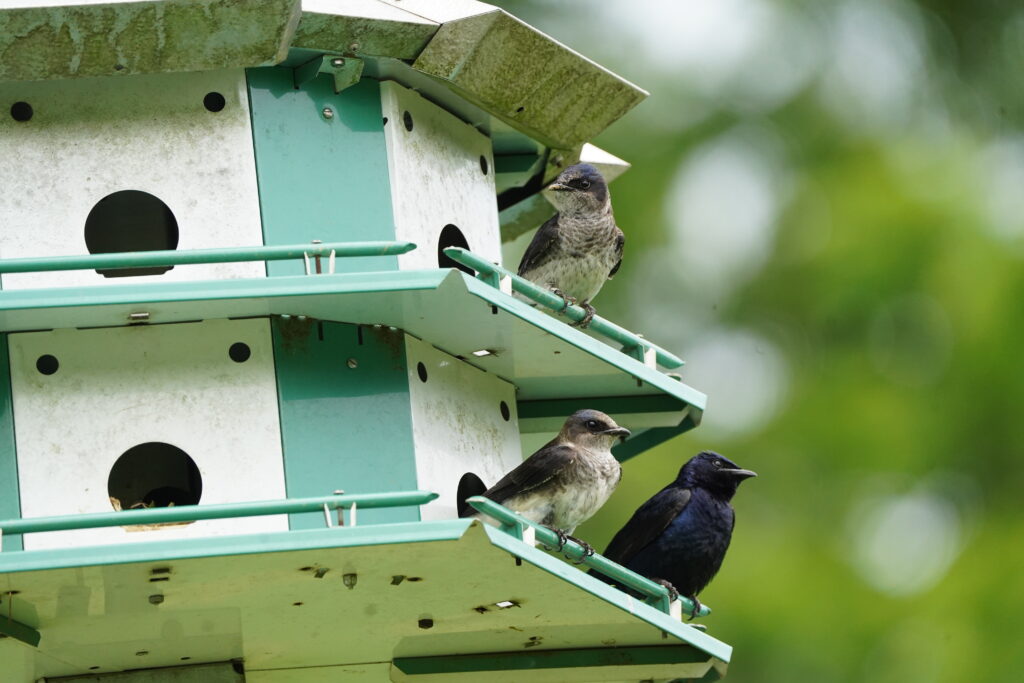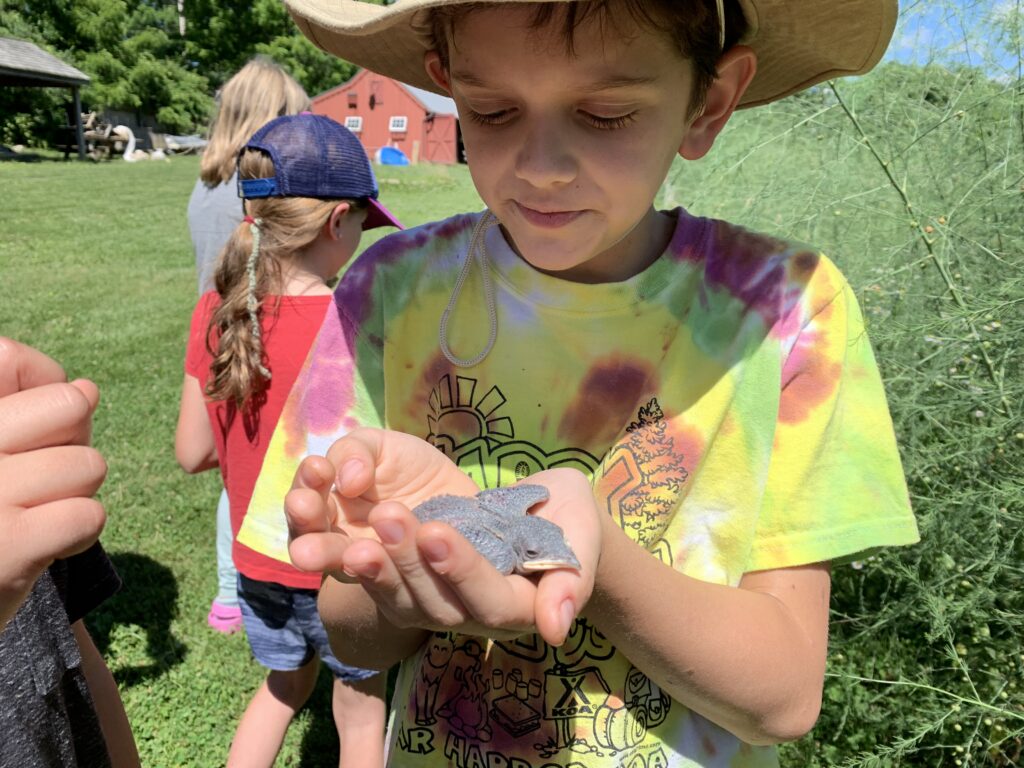
Eight years ago, our Bird Conservation Program Chair and Trustee, Dick Eales, helped to fund and erect a small hotel placed upon the top of a fifteen foot pole. The hotel, fitted with twelve small rooms evenly split between an upper and lower level, has small entrance doors painted white with seafoam green walls separating them and a matching patio and railing for its occupants to rest. For years, the hotel has remained largely vacant; at least for the intended residents.
It was built for the purpose of hosting Purple Martin (Progne subis) nesting colonies. Like many other bird species who historically used hollow tree cavities as nesting locations, Purple Martins have lost a substantial majority of their available natural nesting sites. This has led to a decline in their breeding populations across the United States, where the birds now almost entirely rely upon human-built structures like the hotel mentioned before.

As we approached the end of our spring migration banding season in mid-May, we started to notice birds were occupying the small hotel. Purple Martins are North America’s largest member of the Swallow family, so when we saw the large silhouette soaring around the hotel and perched on its patio we were elated to raise our binoculars and see three beautiful martins! This is the first time since installing the martin hotel that Purple Martins have decided to use the structure to start a breeding colony. And the best part is, so long as the first year of the breeding attempt is successful, the birds will come back to the same structures year after year. Thus far, I have counted six birds using the hotel.
Their songs are lovely murmurations of chortles and bubbles that almost sound like muffled underwater laughter. The adult males have a full plumage of deep, midnight purple that commands your attention on the brightest of summer days, and the sub-adult males and females have whitish bellies and varying amounts of purple on their throats and heads while sporting dark wings and tails.

Purple Martins are long distance migrants, traveling to South America for winter every year. Because they feed exclusively on flying insects, they head south to find warmer temperatures where there is higher invertebrate activity during the northern hemispheric winter. One of our last neotropical migrants to arrive in the spring, the adults will start to show up to their established breeding colonies in southern Pennsylvania throughout April. Then in May, the sub-adults begin to find their new homes. Because our martin colony was newly established this year, we only have one adult male and female, the others being sub-adults. With any luck and a bit of trust in our understanding of these iconic birds’ behavior, they will return to Rushton year after year to raise their young.
On June 28th, our eager Rushton Nature Keepers were able to watch Blake Goll, Education Programs Manager, band the 10-day old chicks. Upon lowering the hotel and carefully checking each nest cavity, she found one successful nest with four beautiful chicks. The bands will be distinct through binoculars, so we will be able to identify the banded birds when they return next year.

The martin hotel overlooks Henry’s Garden and the lower farm fields, just south of the small red barn. If you have not had the opportunity to come experience the martin’s warm greetings and aerial acrobatics as they forage in the air, then come to Rushton Farm and enjoy their presence before they leave again in the fall to continue the annual migration cycle to the southern hemisphere.

